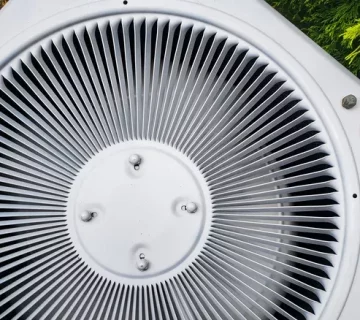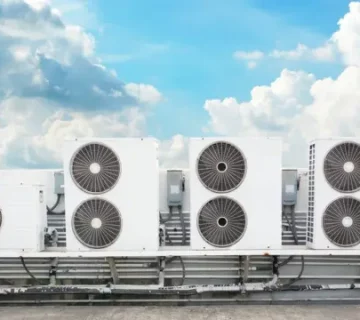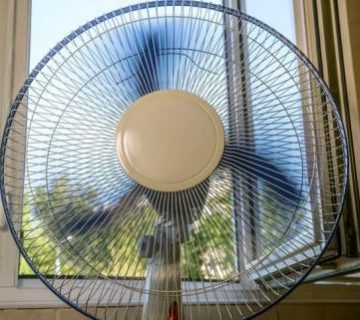Indoor air quality (IAQ) has been a long overlooked issue in comparison to outdoor air pollution. Just because indoor air pollution can be harder to detect, however, doesn’t mean it’s harmless: the concentrations of some pollutants can be between 2 to 10 times higher indoors than outdoors. Aside from the obvious health implications, there are cognitive ones as well. Here’s why businesses should care about the quality of air at the workplace.
The impact of poor air quality in the workplace
There have been many studies done on the economic impact of air pollution. In the workplace specifically, 800,000 people die every year due to poor air quality.
Apart from damaging respiratory and circulatory systems, air pollution has been found to have negative cognitive effects on individuals, from reduced memory, impaired concentration, and lower decision-making capabilities to decreased language and mathematical abilities. A study by Harvard T.H. Chan School of Public Health’s Centre for Health and the Global Environment, SUNY Upstate Medical University, and Syracuse University found that individuals who work in well-ventilated offices with below-average levels of air pollutants perform cognitively better than those who work in environments with average levels of indoor air pollution. The pollutants they first focused on were volatile organic compounds (VOCs), which are typically found in higher concentrations indoors. These compounds are emitted from interior products and building materials such as furniture, plastics, wallpapers, cleaning materials, carpeting, copy machines, synthetic fragrances, and thirdhand tobacco smoke.
For the study, participants working in three different office conditions were compared:
- Normal (conventional work environment with high VOC concentrations)
- Green (work environment with low VOC concentrations)
- Green+ (work environment with enhanced ventilation and low VOC concentrations)
Researchers found that cognitive performance scores for those in green+ environments were 2x higher and those in green environments were 61% higher than those in normal environments. Across nine cognitive function domains, the largest improvements were found in the following areas:
- Crisis Response: the ability to plan and strategize under emergency conditions (131% higher in green+, 97% higher in green)
- Strategy: the ability to use solutions through information and planning (288% higher in green+, 183% in green)
- Information Usage: the capacity to use provided and gathered information to attain goals (299% higher in green+ 172% higher in green)
Researchers also examined the effect of carbon dioxide (CO2) on individuals. While not considered a direct indoor pollutant, as it is an essential gas that naturally occurs in the atmosphere, its concentrations tend to be higher in indoor spaces due to lack of ventilation and thus contribute to cognitive performance. As a result, the study found that out of the nine cognitive functions tested, the scores for seven of them decreased as CO2 levels increased to levels commonly observed indoors. These were:
- Basic Activity Level: the ability to make decisions at all times
- Applied Activity Level: the capacity to make decisions towards overall goals
- Task Orientation: the capacity to make specific decisions towards task completion
- Crisis Response: the ability to plan and strategize under emergency conditions
- Information Usage: the capacity to use provided and gathered information to attain goals
- The breadth of Approach: the capacity to use a variety of options and opportunities to make decisions and attain goals
- Strategy: the ability to use solutions through information and planning
Why do I have headaches at work? The sick building syndrome
Aside from impacting productivity, poor indoor air quality has been linked to an illness called “Sick Building Syndrome”. While the specific causes are unknown, it is believed that poor ventilation and chemical contaminants such as volatile organic compounds are to blame. Exposure to these chemicals results in flu-like symptoms, such as headaches, dry cough, fever, chills, chest tightness, dry or itchy skin, dizziness, nausea, difficulty concentrating, fatigue, and sensitivity to odors. The symptoms usually subside once the individual leaves the building.
How to deal with poor air quality in the workplace
There are various ways you can take action to improve the quality of air in your business environment.
- For larger corporations: ask your facility manager to look into the air quality of your office
- For smaller companies: order an air quality test kit from Breeze Technologies, complete with a sensor and scientific support for the collected data
- For employees: express your concerns about workplace air quality to your wellbeing manager
Make air quality transparent
At Breeze Technologies, we offer high-end, lower-cost sensors that measure all major pollutants, including VOCs. The information can be presented in real-time in our web-based monitoring app, which is available on any web-enabled device, for instance, smart screens and tablets. This allows for transparency and open communication amongst your colleagues and employees on the health efforts of your office. Communicate real-time air quality data to your colleagues with the Air Quality Monitor App.
Start managing your office’s air quality
Our Breeze Environmental Intelligence Cloud allows you to manage and optimize the air quality of your work environment by analyzing and presenting real time air quality data. Using dashboards, visualizations, and threshold analyses, we help you understand the current state of affairs as well as long-term trends so that you can make better, informed decisions for the health and productivity of your colleagues and employees. Should air quality interventions be necessary, we also provide you with the most efficient and effective solutions. All for a healthier, more successful business.
Blog 6
HARNESSING SUSTAINABLE SMART HEATING – A DEEP DIVE
Heating is more than just a comfort; it’s a necessity, especially when the temperature dips. However, the way we approach heating can have significant implications for our energy consumption and sustainability goals.
In most homes, the heating is ideally turned down during the daytime when family members are away, and the windows are only opened intermittently. But offices present a different scenario. The continuous operation of heating systems, along with the frequent opening of windows, means the energy consumption dynamics are quite different. The scope for energy saving in office environments is surprisingly higher due to user behavior.
Smart heating: A cost-benefit analysis
Based on numerous studies, the savings potential through IoT-based smart heating is typically 20% for residential buildings and even 30% for commercial buildings – impressive and relevant savings for all 99% of existing buildings!
When considering a transition to smart heating, understanding ROI is essential. Energy renovation by replacing the building envelope requires 50 times the return on investment in contrast to smart heating, i.e., 100 years compared to two years.
Customized comfort
The savings mentioned above are backed by an efficient and intelligent scenario in which the heating adjusts depending on the day, time, and week. Additional functions such as adjusting the radiator temperature to the type of room used, the individual occupancy of a room, and window open detection ensure the highest level of efficiency. All of this doesn’t require a lot of intelligence, but it does require manual work several times a day. Automation fully and sustainably exploits the savings potential.
From heat to power
A crucial part of the solution for use in existing buildings is a radio-controlled heating valve controller, as wiring to each radiator would be very wasteful, mainly in retrofit. Since this is an actuator, batteries must be changed every year. The temperature-supplied EnOcean device uses the temperature difference between the heating system and the room air and converts it into electrical voltage. Temporary storage and intelligent control ensure that the system is always supplied with sufficient power, even during the summer break. The total energy savings are a result of several functionalities:
- Adaptive room temperature control (room type)
- Presence detection control (daytime)
- Window status (ventilation sensitivity control)
The remarkable aspect of a smart heating system is its completely wireless nature. By inserting a simple EnOcean USB stick into existing Wi-Fi access points, such as those from Aruba Networks, no additional gateway infrastructure is required for the application. Because the total cost of system ownership is significantly reduced, Wi-Fi access points are the IoT gateways of the future!
Even if batteries themselves are not expensive, their regular maintenance is an immense cost factor, especially in the professional service sector (the service costs are typically 25 Euros per device per year in larger quantities). In addition, batteries are prone to failure and are not at all environmentally friendly. Energy harvesting ensures a truly sustainable system with the lowest TCO.
Flexibility and scalability
An open system design with standardized interfaces ensures compatibility with a wide range of devices and applications. Modularity and interoperability mean this system can grow, evolve, and adapt to the changing needs of its environment.
At a time when energy conservation and sustainability are not only desired but essential, the introduction of efficient and interoperable smart heating solutions is not just about staying warm; it’s about doing this responsibly.






No comment